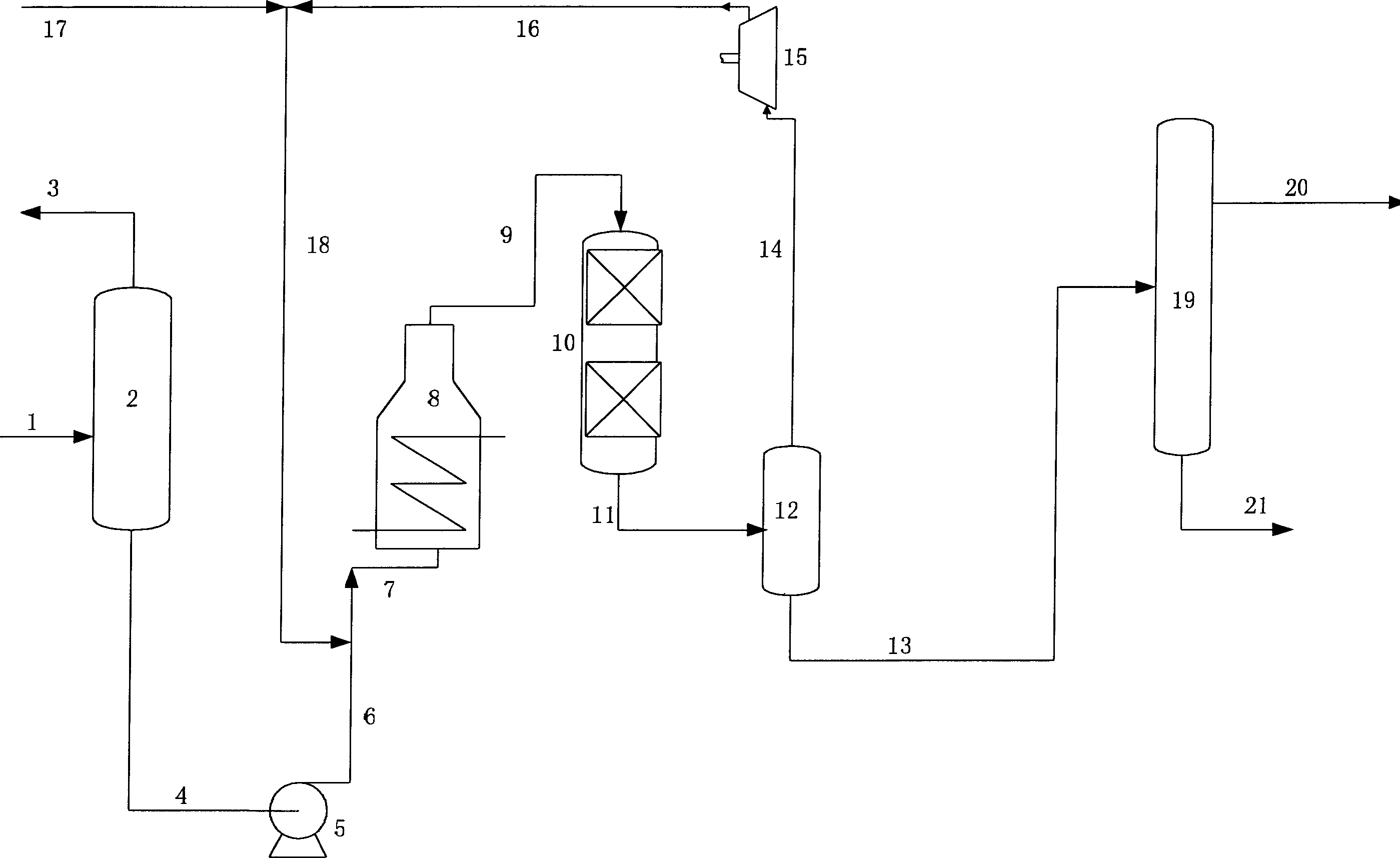Method for producing low sulfur gasoline
A gasoline and light gasoline technology, applied in the petroleum industry, hydrocarbon oil treatment, hydrotreating process, etc., can solve the problems of unqualified mercaptan sulfur and large loss of octane number, etc.
- Summary
- Abstract
- Description
- Claims
- Application Information
AI Technical Summary
Problems solved by technology
Method used
Image
Examples
Embodiment 1
[0038] Compared with the comparative example, the difference is that the traditional hydrodesulfurization catalyst CH-18 is used under the same raw material, hydrogen partial pressure, liquid hourly space velocity, and hydrogen-to-oil ratio. The process conditions and properties of the heavy gasoline fraction after hydrogenation are shown in Table 2. It can be seen from Table 2 that to achieve the same desulfurization depth, this embodiment is 10°C lower than that of the comparative example, but the olefin saturation rate is only 29.01%, which is 29.77 percentage points lower than that of the comparative example. It shows that the performance of the catalyst of the present invention is far superior to that of the traditional hydrogenation catalyst. At the same time, the sulfur content of the heavy gasoline fraction after hydrogenation is only 82ppm. The properties of gasoline products after hydrogenation of heavy gasoline fractions and light gasoline fractions are listed in T...
Embodiment 2
[0040] Using FCC gasoline B as the raw material, the raw material is first cut, the cutting point is 100°C, and the heavy gasoline fraction accounts for 49.1% by weight of the raw material. The properties of the heavy gasoline fraction are shown in Table 1. The heavy gasoline fraction and hydrogen are contacted with catalyst RSDS-1 for hydrodesulfurization. The process conditions and properties of the heavy gasoline fraction after hydrogenation are shown in Table 2. It can be seen from Table 2 that when the hydrodesulfurization rate is as high as 94.79%, the olefin saturation rate is only 26.63% by weight. The sulfur content of the heavy gasoline fraction after hydrogenation is only 76ppm. The properties of gasoline products after hydrogenation of heavy gasoline fractions and light gasoline fractions are listed in Table 3. It can be seen from Table 3 that the loss of anti-knock index of gasoline whole fractions, that is, the final gasoline product, is only 1.2 units.
[0041...
PUM
 Login to View More
Login to View More Abstract
Description
Claims
Application Information
 Login to View More
Login to View More - R&D
- Intellectual Property
- Life Sciences
- Materials
- Tech Scout
- Unparalleled Data Quality
- Higher Quality Content
- 60% Fewer Hallucinations
Browse by: Latest US Patents, China's latest patents, Technical Efficacy Thesaurus, Application Domain, Technology Topic, Popular Technical Reports.
© 2025 PatSnap. All rights reserved.Legal|Privacy policy|Modern Slavery Act Transparency Statement|Sitemap|About US| Contact US: help@patsnap.com

